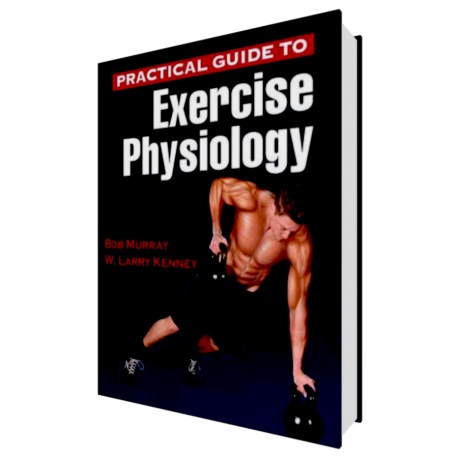
by Robert Murray and W. Larry Kenney (Human Kinetics)
The benefits of exercise are well documented and indisputable. Most commonly we think of gaining cardiovascular fitness and improvements in strength, flexibility and human performance. However, with human physiology being a complex and intricate relationship of the body’s systems in a constant state of change, how many of us really understand what’s going on during each bout of exercise? Or, what is required to reach personal or client’s training goals?
For many, scientific literature can be extremely complex and the volume of content overwhelming, not to mention the validity of questionable sources and reliability of information. Professor Robert Murray and W. Larry Kenney present their Practical Guide to Exercise Physiology, which can act as a reference guide for exercise professionals or as an introduction to the science behind exercise programming and human physiology. With extensive experience in sports science, physiology and kinesiology, the authors combine essential scientific content with illustrations, diagrams and tables to present a clear documentation of the subject.
All sections provide a direct connection between theory and practice and are supported by illustrations. There are interesting fast facts throughout and an additional index of frequently asked questions and answers to have you ready to respond to clients.
Part 1. ‘Warming Up: Physiology’ addresses the muscle, nervous and energy systems, circulatory physiology and adaptations to training. You will be left with a clear understanding of how the body functions, become familiar with the scientific terms, and the adaptations occurring during exercise
Part 2. ‘The Science of Training Design’ continues in an interactive format to cover the principles of exercise prescription and program design for specific training goals, including strength, weight loss, speed, power and aerobic endurance. This allows the reader to make a connection between their own exercise interests as well as offering an overview of exercise modalities to suit their client’s goals and the means to design appropriate exercise programs. This knowledge is essential to all movement practitioners in order to understand the body’s response to exercise stressors for physiological adaptations.
Part 3. ‘Special Considerations’ offers training guidelines and discusses special considerations of heat, cold and altitude as well as exercise for children, older adults and during pregnancy.
Practical Guide to Exercise Physiology delivers an easy-to-follow reference guide and provides a valuable resource for fitness and exercise professionals, the advanced exercise enthusiast and movement therapist that is applicable to clients or athletes at every level. The authors bring both science and practice together in a well written text, supported with artwork and diagrams to tie it all together.
Recommended.
Mariana Tolj
Ordinary Councillor PAA
Pilates Instructor and Exercise Physiologist

Comments are closed.